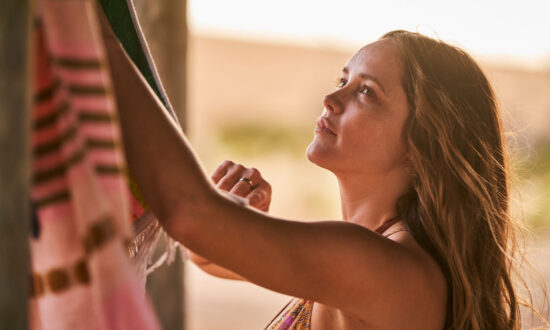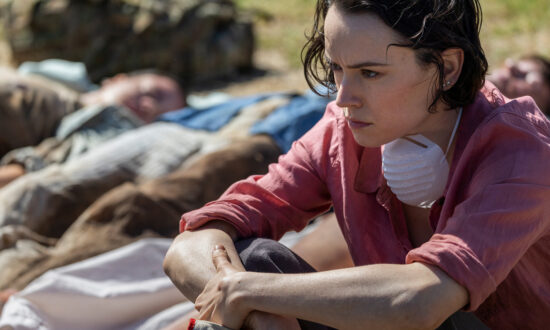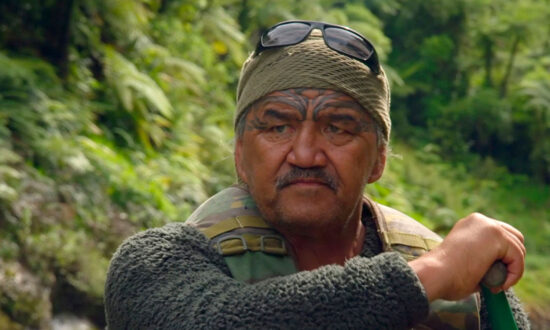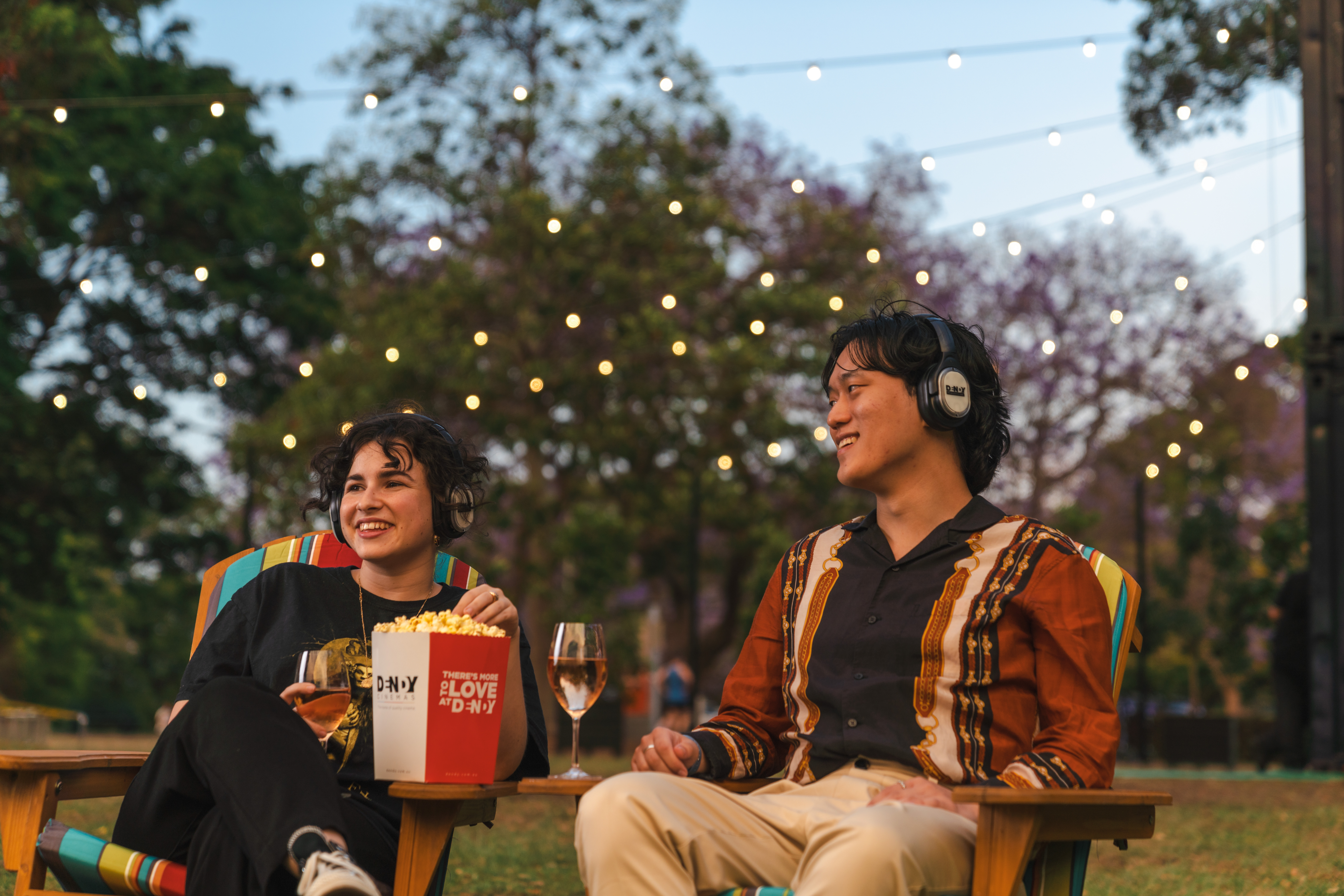Nothing could have prepared Anna Lindner for, in very quick succession, the death of one parent and illness of the other. They were a vibrant Barossa couple who were childhood sweethearts and had barely spent a night apart. It brought Lindner, an actor living and working in the US, back to the place she fled from almost straight after school.
While her father was dying, she kept a journal where she noted the sad and sometimes hilarious things the family were experiencing. Later, after her mother’s cancer diagnosis and her decision stay in the Barossa to be by her side, it inspired her to write the funny, sad and offbeat SBS Digital Original series A Beginner’s Guide to Grief.
Filmed in the Adelaide Hills around Hahndorf, Nairne and Uraidla, the six 10-minute episodes star Lindner along with Glynn Nicholas, Carlo Ritchie and Caitlin McDougall.
The freewheeling and partly autobiographical story of a young woman losing a father and mother has an anarchic spirit running through it – think cannabis-laced brownies at the wake – some, but not all, of which was taken from life. It also contains some truths about death and loss that Lindner experienced, and an underlying message about how ill-equipped we are to deal with death and dying.
Half the people in the supermarket see you and dodge their trolleys the other way
Lindner’s father was Carl Lindner, a fifth-generation Barossa winemaker with lineage going back to the God-fearing Silesian settlers who fled to the other side of the world to escape religious persecution. He had a reputation for being larger than life, and Linder thinks now this was part of the reason she wanted to leave her home at St Hallett winery, near Tanunda.
“Certainly, by the time I was a teenager, I wasn’t sold on the idea of living in a small country town,” says Lindner, who plays the fictional daughter, Harry. “But I think it had an impact, growing up on the land and not having anyone around your age to play with; it leads to a vivid imagination fairly quickly.”
She almost ran from the school doors to Edinburgh, where she threw herself into acting and the theatre. Later, she went to New York, where she studied at the Atlantic Theatre Company, an ensemble and acting school formed in the 1980s by David Mamet and William H Macy.
“It shifted my understanding of drama and storytelling. I hadn’t been exposed to anything like that before,” Lindner says. “That really set me on a path.”
She worked in theatre in New York, then moved to Los Angeles to pursue on-screen acting with a preference for comedy, but was starting to bristle at the scripts she was offered.
“I could feel myself being torn because I really wanted to show up and give it my best but the material I was being given as a female was limiting and frustrating and two-dimensional. I wasn’t even the girlfriend – I wasn’t skinny enough or attractive enough for that – I was always the quirky one.”
Lindner tried to embrace it but felt stuck, starving herself for roles and telling herself it was justified because she was performing alongside her comedy heroes like Zooey Deschanel (New Girl), TJ Miller (Deadpool) and Martin Starr (Freaks and Geeks).
During a trip back to Adelaide for a friend’s wedding, her father was diagnosed with cancer and she realised very quickly she wanted to stay close to him and her mother while they faced his end.
“He was quite an incredible gentleman of the Barossa; his heart beat for the community and that was his driving force, to make the Barossa the best place to live, and somewhere nobody wants to leave,” she says.
As he became frailer, she started writing down things she didn’t want to forget. “It was just little visuals that I was witnessing or little things that I was hearing from him,” she says.
Incredibly, 48 hours before her father died and two months before Christmas in 2017, her mother was diagnosed with cancer. At the time, it was so terrifying Lindner could barely comprehend it.
“I felt like the ground was cracking open. I didn’t know how to survive that. All I could think about was keeping Mum alive.”
All of which sounds harrowing, whereas A Beginner’s Guide to Grief focusses on the poignancy of loss but also on the inappropriateness and sheer nuttiness of behaviour around death within an extended family. A Screen Australia writers’ project with SBS, Digital Originals, felt like the best shape for a story that came to include a fictional pyromaniac foster sister, a pervy cousin and a lot of ardent Lutherans who argue among themselves about cremation (her father’s preference) or burial.

Cassandra Sorrell as Daisy and Anna Lindner as Harry. Photo: SBS
“The big observation for me around the time that Dad passed way was that people didn’t know how to talk about death, to hold the space for grief,” she says. “Half the people in the supermarket see you and dodge their trolleys the other way.”
Lindner is happily reconciled now with life in the Barossa, where her real mother is alive and in remission, although she still feels like an outsider after so long overseas. She is doing some acting and writing, and has projects on the go. She was also honoured this year to accept a role as ambassador for Dying to Know Day, a national campaign to encourage conversations and thought around death.

Get InReview in your inbox – free each Saturday. Local arts and culture – covered.
Thanks for signing up to the InReview newsletter.
She is auditioning for roles but also living where she grew up and appreciating home in a much different light.
“Coming back as an adult, you see very quickly how good you had it,” she says. “You come back to a place like this and you really do feel the exquisite beauty of it and the connectedness to nature. I don’t take that for granted at all now.”
A Beginner’s Guide to Grief airs Sunday, September 4, at 9.20pm on SBS VICELAND and on SBS On Demand.
Support local arts journalism
Your support will help us continue the important work of InReview in publishing free professional journalism that celebrates, interrogates and amplifies arts and culture in South Australia.
Donate Here




